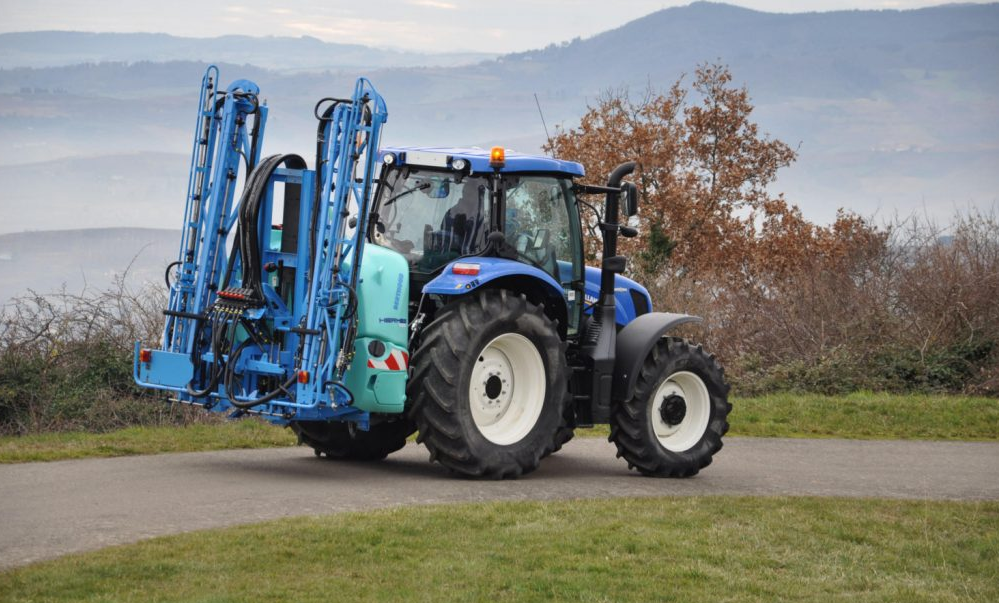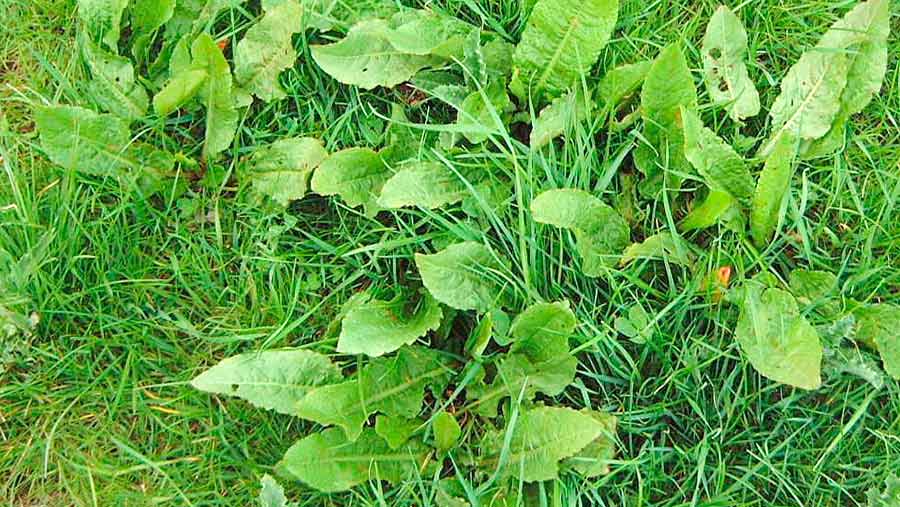Docks are known to be one of the most troublesome grassland weeds, but did you know that leaving them in your silage this summer could have implications for next year’s weed control?
Short-term, the presence of broadleaved weeds in grassland will limit grass yield and quality. Docks and chickweed are nutrient loving weeds, thriving in more intensively managed swards.
Other weeds such as dandelion, thistle, rushes and ragwort can also cause problems. Weed species compete with grass for nutrients and space, reducing the quantity and quality of the sward and hindering silage fermentation.
Dock Control
Reducing dock infestation by 20% will provide an additional 0.3t of grass dry matter per hectare (DM/ha).
Where dock-infested swards are ensiled, their high nitrogen content adversely hampers a good fermentation, leading to a high-pH silage that spoils quickly when opened and depresses intake.
Dock seeds can also survive in silage and pass through the cow, infesting a field when slurry is spread.
The best defence against perennial broad-leaved weeds is to prevent them from establishing in the first place. This can be achieved by having a well-managed, dense sward, growing in well-structured, non-compacted soil.
Over or under-grazed leys that have been poached offer perfect conditions for weed seeds to germinate. Topping or mowing weed plants provides short-term visual satisfaction but stimulates active regrowth, so the problem gets worse, not better.
Modern systemic herbicides offer a long-term solution for controlling persistent weeds in grassland. A well-timed treatment with an appropriate herbicide can transform a weed dominated pasture into a productive ley, without the need to reseed.
Farmers may have to be more pro-active this year as weeds have generally survived the mild winter and favourable spring weather. Where clover is present, it is advisable to use recommended clover-safe herbicides.
Spraying – how and when to apply herbicides?
To achieve maximum chemical uptake the majority of docks should be at the large rosette stage. This is when there is the maximum leaf surface area on the dock – ideally covering an area at least the size of a dinner plate – but before the seed stem starts to appear.
This stage is easiest to obtain in the spring or autumn when the dock is in the vegetative stage of its growth cycle and most translocation of chemical within the plant is downward into the root.
Once the dock starts to shoot, most of the translocation then tends to be upward in the plant to support the rapid seed stalk growth.
Since the chemical moves by translocation within the plant, little moves at this time to the root and therefore control of the root will be very poor.
To ensure good translocation of chemical into the root the dock needs to be actively growing. See photo below illustrating the optimum stage to spray the dock.
Spray application
Follow the spraying guidelines:
- Use 3-4 bar pressure.
- For water volume, generally around 115-135L/ac (25 to 30G/ac). Please adhere to individual product manufacturer’s instructions.
- Aim for a medium spray for better plant coverage.
- Aim to spray in early morning or later evening – when no direct sunlight is prevalent especially in warm weather as this improves chemical uptake and reduces the likelihood of scorching.
Timing of spraying
For a sequence of applications, the best timings would be spring (mid-April to June) and then a follow-up spray on any regrowth in the autumn (late August-September) or the following spring.
No dock spray will give complete control with a single application and effective dock control requires a programmed approach. Follow-up applications will be necessary to deal with docks and germinating seed docks not controlled in the first treatment.
Long term control can only be achieved using a sequence of applications of a translocated herbicide because of the potential of regrowth both from roots and the seed bank built up in the ground over the years.
If seed stalks are seen on the plant or if the dock has diseased leaves or is under pest attack, it is then better to cut/top or graze and allow re-growth of docks before applying chemical.
Allow adequate time, generally three to four weeks (depends on individual products – always check the label) between spraying and cutting for silage. This will allow for effective herbicide translocation to the roots of the dock plants and achieve maximum effect.
Recent research has shown that longer-term – up to five years – control of docks can be achieved by applying a suitable herbicide onto small docks shortly after reseeding.
By applying the herbicide at this stage of the dock’s development, facilitates almost complete elimination of the docks. Docks that emerge in the following years rarely establish due to competition from the grass.
Spring Reseeds
Dr. David Patterson, AFBI agronomist, advises: “For a spring reseed it is essential to control broad-leaved and grass weeds prior to sowing and sowing in late spring is preferable as germination and growth is improved when soil temperatures are above 10°C.”
Prior to reseeding the old sward should be sprayed with a glyphosate herbicide to kill all broad-leaved weeds (e.g. docks, chickweed, thistles) as well as weed grasses (e.g. scutch, creeping bent, meadowgrass).
If weed grasses such as scutch are present in the old sward and are not killed, they can quickly re-establish in the young reseed.
If planning to reseed later this spring, silage and grazing fields can be sprayed typically 7-10 days before harvesting – check the specific product safety label instructions.
If using minimum cultivation, more broad-leaved weeds may establish in the young sward; this will require a post-emergence spray.
A broad-spectrum spray will remove chickweed, docks and thistles and should be sprayed 6-8 weeks after reseeding when there are three leaves on the grass plant.
The product choice will depend on the presence of clover and the main weeds present. This will help to control weeds preventing dock infestations re-occurring.
Other broad-leaved weeds such as redshank and chickweed can be controlled by grazing or close topping if dispersed throughout the sward (i.e. not in dense clumps).
Spraying Regulations
Comprehensive advice on all aspects of using pesticides is contained in the DAERA Code of Practice for Plant Protection Products.
The code explains how to use plant protection products safely and so meet the legal conditions which cover their use.


